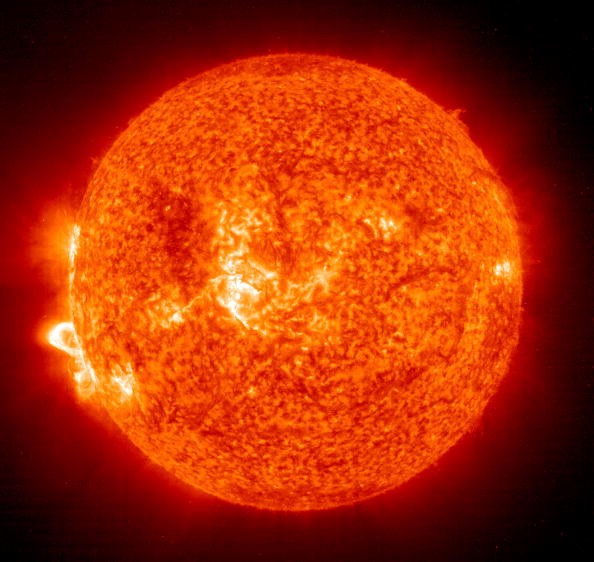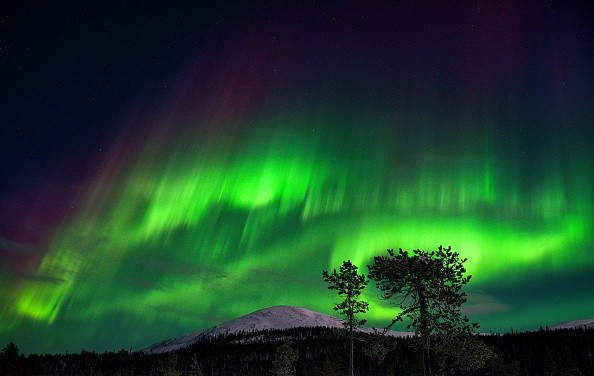Forecasters at the Space Weather Prediction Center (SWPC), a part of the US Department of Commerce under NOAA, have canceled a storm watch for a moderate geomagnetic storm expected on February 2.
G1 Geomagnetic Storm Watch for Thursday has been canceled as well by the SWPC. There is no Geomagnetic Storm Watches active on Earth after these two cancellations.

Cancellation of Geomagnetic Storm Watches
At 6:32 p.m. ET on January 29, an M-class solar flare erupted from the Sun's Region 2936, causing some concern. A full halo coronal mass ejection (CME) was observed in NASA/SOHO LASCO coronagraph imagery, according to the SWPC.
According to Weatherboy, an estimated CME speed of 662 kilometers per second (km/s) and an arrival window of late February 1 to early February 2 ET have been predicted by SWPC forcasters. In terms of its intensity and arrival time.
However, despite the presence of a disturbance in the Earth's magnetosphere, it doesn't seem to merit a Geomagnetic Storm warning at this time.
This event does not appear to have the potential to interrupt energy, communication, and internet lines for weeks, despite the fact that there are concerns about a future solar explosion. Although few effects, such as an electric display of the Northern Lights, are predicted to occur.
Characterizing the Magnitude of Geomagnetic Storms
New York, Wisconsin, and Washington, D.C., could have seen aurora borealis as a result of an event initially predicted for February 2. The magnitude of geomagnetic storms can be described by the K-index and, by extension, the Planetary K-index.
Using Kp as an indicator of geomagnetic disturbances, the SWPCS determines if geomagnetic alerts and warnings need to be issued for users affected by these disturbances, according to the SWPCS.
Besides characterizing the severity of a geomagnetic storm, the Kp index can also be used to predict the aurora's intensity. It's unlikely that the aurora will be visible in the southern hemisphere without a full-blown geomagnetic storm.
Space weather is mostly caused by solar activity. When the Sun's surface is more active than usual, it might be described as being in a "stormy" phase. As a result, the Sun can unleash a torrent of charged particles in every direction.
The aurora borealis (Northern Lights) and aurora australis (Southern Lights) can occur when these charged particles interact with the outer regions of our atmosphere.

The Sun's Coronal Hole
The Sun's coronal holes are a major source of space weather at the moment. It is because coronal holes are cooler than the surrounding plasma and have open magnetic field lines that they appear as dark patches on the Sun, according to the Space Weather Prediction Center. These black patches emerge in the Sun's outermost atmosphere, known as the corona.
During the recent solar eclipse, scientists were particularly interested in studying the Sun's corona, another prominent feature.
Ultraviolet (EUV) and soft x-ray solar pictures reveal these features. When a coronal hole forms, it can increase the amount of solar wind that blows toward Earth. These holes can appear anywhere on the sun and are more prevalent during solar minimum.
The Sun rotates once every 27 days, and some coronal holes can last multiple of these rotations. In the north and south poles of the Sun, permanent coronal holes are prevalent, but they can extend towards the equator, resulting in a bigger area of the Sun.
Coronal holes near the equator of the Sun usually cause the solar wind to arrive Earth faster. G1-G2 geomagnetic storming levels are typical, and on rare instances, even G3 levels have been observed in coronal holes.
Related Article : Sunspot Blast to Hit Earth, Confirmed by Geomagnetic Storm Watch
For more news, updates about geomagnetic storms and similar topics don't forget to follow Nature World News!
© 2025 NatureWorldNews.com All rights reserved. Do not reproduce without permission.





